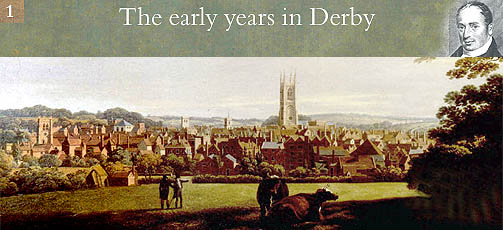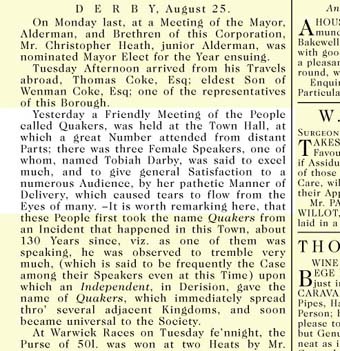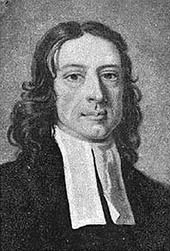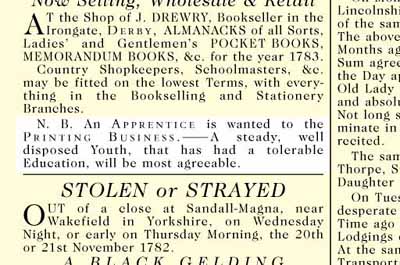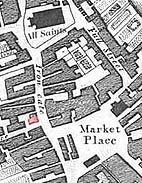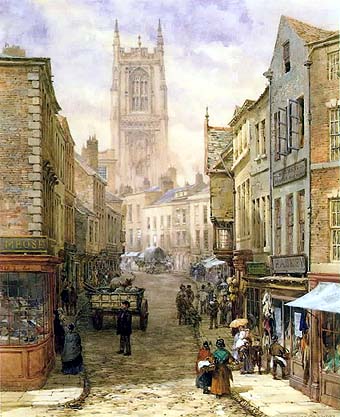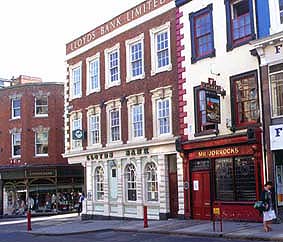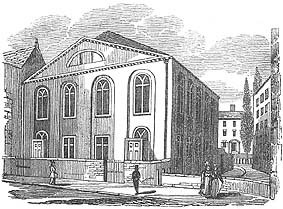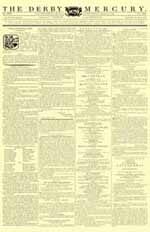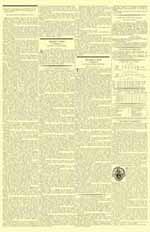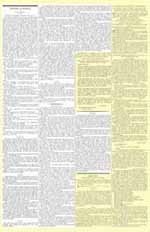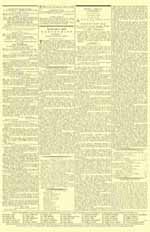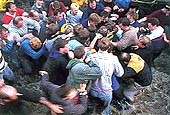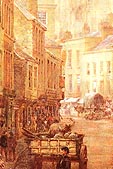(1) Page 21, 'Citizen's
Derby', by W Alfred Richardson, University of London Press, 1949.
(2) Pages 15-18, 'Calcutta',
Geoffrey Moorhouse, Weidenfeld and Nicholson, 1971.
(3) Nathaniel, a nephew,
is mentioned in J. C. Marshman. William must therefore have had
at least one brother (see Chapter 24).
(4) Ward was not an
uncommon name in the town. The Derby Local Studies Library has
an alphabetical index of references to local residents found
in Parish Registers, histories, biographies and newspapers etc.
Between 1702 and 1788 there are 15 references to different John
Wards. The closest entries to the relevant time are:
a) the 'apprenticeship
of one John Ward to Edward Fletcher, joiner, on August 16th 1762'.
b) the 'marriage of John
Ward to Ann Fletcher, at St Alkmund's, on September 12th 1764'.
The occupation ties in with
what we know from Stennett. It is quite feasible that John married
his employer's daughter.
It's worth noting that there
were few dissenters at that period in Derby and those churches
that existed were not legally allowed to hold infant baptisms.
Most babies were baptised at their local parish church within
eight days of birth. If the above records refer to William's
parents then the baptism would probably have been at St Alkmunds.
Unfortunately the records of baptisms and deaths at St Alkmund's
do not exist for the period 1729 - 1813. It is therefore not
possible to find records of William's baptism, or John's death
that is if St. Alkmund's was their parish church. Currently,
no reference to the infant baptism of William Ward has been found.
(5) In the records of
Brailsford Parish Church
two interesting entries are recorded: 'Thomas Ward of Stretton
married May Fone on 3rd May, 1720'; also, 'Thomas Ward
of Stretton married Hannah Morley on 18th June, 1728'.
Whether these are both the same Thomas Ward is not known, but
to have the village attached to both names is unusual. To have
two different Thomas Wards in the same small village, both marrying
in the same Derbyshire village, some sixteen miles north of Stretton, is unlikely.
The marriage, by tradition, would have taken place in the parish
of the bride.
(6) In her biography of the energetic Quaker evangelist
Abiah Darby (1716-1793), Rachel Labouchere quotes a letter dated
30th September, 1774, which mentions a visit to Derby on page
173. 'We had many glorious meetings as we passed along, both
among friends and others. We had a meeting at Barnard Castle
in their Town Hall, one at Norton in the meeting yard, one at
Tadcaster in the Methodist House. One at Harrogate in one of
the Rooms and at Derby, Burton and Lichfield in their Town Halls,
and all where no Friends had meeting houses which were
extraordinary opportunities but rather no Friends dwelt
in these places yet we were not destitute of friends' Company
for several met us there, accompanied us to them, and at Derby
we dined four and thirty friends, tho' none lived very near.'
According to the edition of the 'Derby Mercury' quoted above,
this meeting at the Town Hall, Derby, took place on 24th August,
1774. The building had been rebuilt in 1730 to replace the previous
Town Hall, and Abiah Darby may not have known that the meeting
was being held on the exact spot where the founder of the Quakers,
George Fox, was imprisoned between 1650 and 1651. The previous
Town Hall housed the town gaol on the ground floor.
Abiah Darby was the wife of
Abraham Darby II who inherited the ironworks in Coalbrookdale,
Shropshire, from his father, Abraham Darby I. Coalbrookdale was
the birthplace of the Industrial Revolution.
According to a leading member
of today's meeting, Abiah Darby is known to have contributed
financially to the Quakers of Derby.
Derby's association with the
Quakers goes back to their founder, George Fox, who was imprisoned
for blasphemy in the notorious town gaol, below the Town Hall,
between 1650 and 1651. At his trial Fox bid Justice Bennett to
'tremble at the word of God'. Bennett scornfully nicknamed him
a 'Quaker', and the name has stuck ever since. The forces of
Cromwell were recruiting in the Market Place and since: a) his
sentence was coming to an end; b) he was regarded as a born leader;
and c) he talked sense about religion, he was brought before
the commissioners and soldiers and offered a commission on the
spot. He refused, and was thrown back into the dungeon, 'a lousy,
stinking low place without any bed', and kept there for six months.
('George Fox and the Valiant 60', Elfrida Vipont). The prison
used to flood when the nearby Markeaton Brook overflowed, which
was not uncommon.
According to Simpsons 'History
and Antiquities of Derby' the Quakers in Derby were one of the
earliest establishments of that body. They survived discreetly
and built their first meeting house in 1808 on St. Helen's Street.
It still survives almost unchanged to this day.
For more information about
Ironbridge, go to the Ironbridge
Gorge Industrial Museum web site
(7) There had been a
Grammar School in Derby since 1555 (created by a Royal charter
from Queen Mary). The school produced some gifted pupils, including
the first Astronomer Royal, John Flamstead. It was available,
free, to the sons of Burgesses and Freemen as part of the school's
Charter. Wealthy parents were willing to pay for their sons to
attend and this raised the standard of teaching. However, by
the end of the 18th century, with public boarding schools coming
into existence (such as Repton), wealthy parents no longer sent
their sons to the Grammar School. This meant a decline in standards.
William was not eligible for the Grammar School, so his widowed
mother must have struggled to provide him with the education
he actually received. There were small private schools in the
area of Green Lane and The Wardwick so William probably went
to one of these. At the Derby Local Studies Library there is
a list of all the pupils who ever attended the Grammar School
when it was at St Peter's Churchyard. There is no record of a
William Ward.
(8) Rough and tumble
did not mean just schoolyard games, but a form of legalised riot
called the Shrovetide Football Match. The game bears no resemblance
to any football match we know. The young men living south of
Markeaton Brook were named after the parish of 'St. Peter's',
and those living north of it were called 'All Saints'. It took
place on Shrove Tuesday and Ash Wednesday of each year. Shops
and businesses were boarded up as the whole town was the pitch
including the river and the brook. The ball, a solid mass
of leather, was thrown at noon into the dense mass of people
assembled in the Market Place to a great roar. The crowd heaved
and wrestled the ball either to Nun's Mill, which was the aim
of 'St Peter's', where it had to be struck three times against
the water wheel in order to score a goal, or for 'All Saints'
the goal was Gallows Baulk, on Osmaston Road. Teams of specialists
were positioned at strategic places to attack the opposing side.
The tactics were intrigue, bluff and brute force. The game went
on till night, and was resumed on Ash Wednesday. In 1846 the
game was abolished by the Mayor. ('Some Reminiscences of Old
Derby', Alfred Wallis, 1909, one time editor of the 'Derby Mercury')
